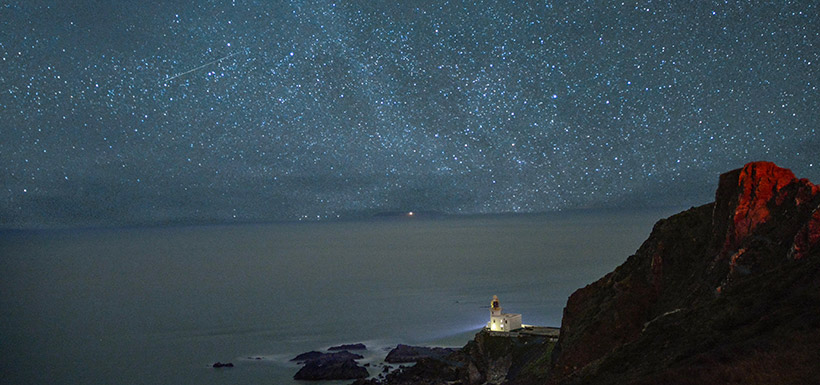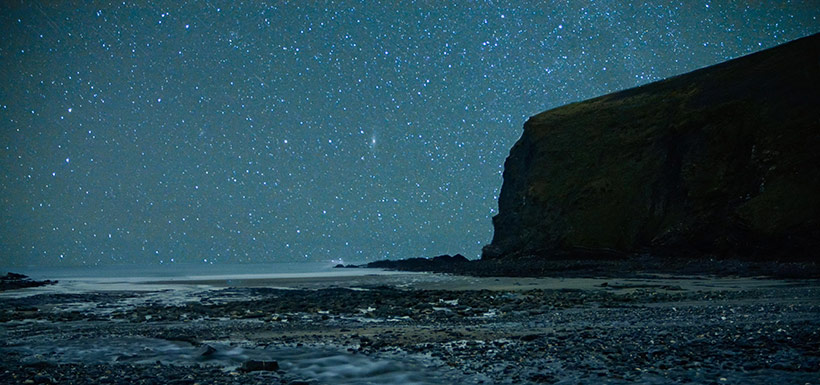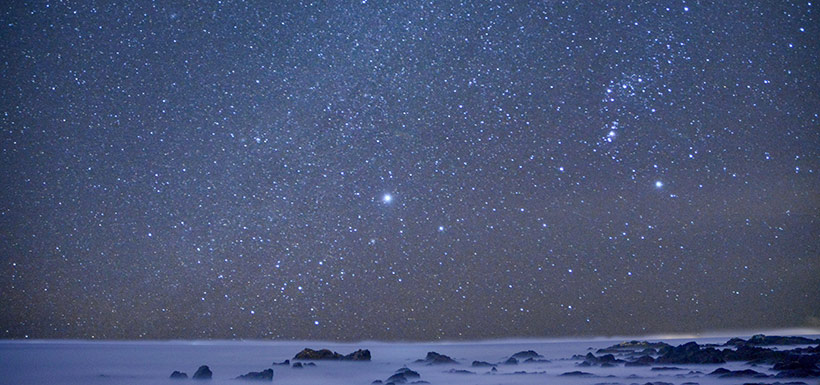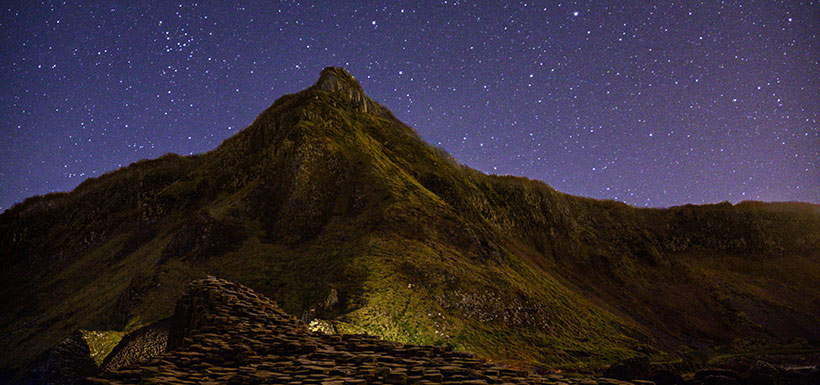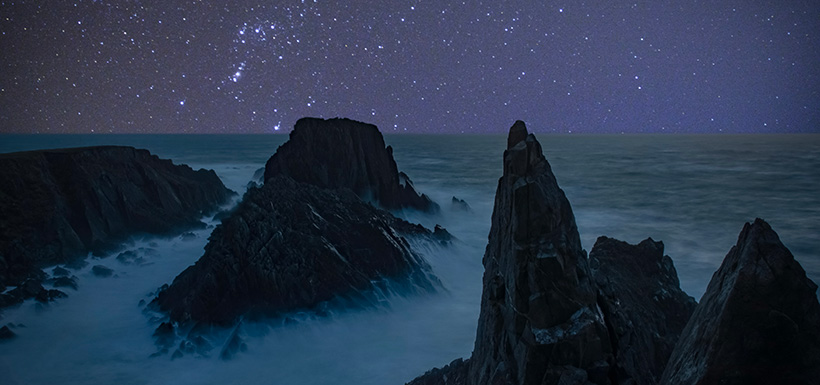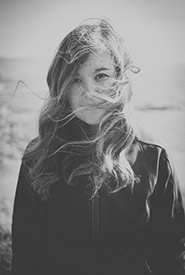Adventures in the night: My foray into astrophotography
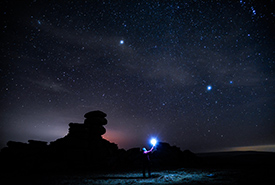
Located on Plymouth's doorstep, Dartmoor National Park is a vast moorland known for its forests, rivers, wetlands and tors (rock formations). This photo is of Great Staple Tor with me in the foreground. (Photo by Esme Batten/NCC staff)
“Are we almost there?” I ask my new friend Matt as we wander along a sea cliff on the north coast of Cornwall, U.K., shivering, in search of our shooting location for the evening. Although by Canadian standards the evening was balmy at 2 C, the U.K. cold really bites. I remember laughing at my parents when they told me that despite the temperature rarely going below zero, the damp cold in the U.K. really gets into your bones.
A few years ago, I was the Nature Conservancy of Canada's (NCC's) conservation biology coordinator for the Saugeen Bruce Peninsula (now program director for midwestern Ontario) and could most often be found wandering around the forests, swamps and alvars of the area. However, with my grandparents’ health declining, I was given permission from my amazing managers to work remotely from the U.K. for a few months.
Luckily for me, my family lives along the southwest coast, in Plymouth, a city in the county of Devon — one of the most beautiful parts of the U.K. The area is surrounded by amazing hiking opportunities, with a 1,000-kilometre coastal path at my doorstep.
People from across the U.K. often visit Devon and Cornwall during the summer because of the regions’ sandy beaches, dramatic sea cliffs and picturesque, medieval coastal towns. While I have spent most of my days working from a local Starbucks and spending time with my family, I have spent many evenings wandering around Devon and Cornwall in search of astrophotography (i.e., photographing astronomical objects and events) opportunities.
Related blog posts
Now you might be wondering why I became interested in astrophotography. It isn’t exactly a mainstream hobby. I have always loved taking photos and even purchased a digital single-lens reflex camera a few years ago to capture photos of birds I was seeing in the Bruce Peninsula and elsewhere in my travels. I had always wanted to learn more about photography, but never found the time to really dedicate the energy needed to truly learn how to use my camera.
One of the first friends I made in the U.K., Gaz, was interested in space and was excited about getting a camera to pursue astrophotography. With free time in the evenings, I had time to learn how to use my camera. Winter is also the perfect season to attempt astrophotography, given the number of hours of dark skies.
A twilight view of Pen Y Fan, the highest peak in south Wales (Photo by Esme Batten/NCC staff)
Although I knew the general concepts of astrophotography from watching YouTube videos and reading a few online articles, I wasn’t quite prepared for how steep a learning curve it was. I still remember how excited I was after hours of attempting to capture my first clear stars. Once I finally was able to photograph Orion’s Belt, I felt proud, despite it being nearly 1 a.m. I knew that to improve, I’d have to dedicate more time to astrophotography and find new learning resources, as there are so many of them out there.
Over the past few years, I have had the privilege of working with one of NCC’s conservation technicians, Chelsea, who is also an incredible photographer. She mentioned some of the amazing photographers she had met on Instagram and who lived in Ontario. So I thought that I would begin to look up astrophotographers living in Devon and Cornwall on Instagram and see what I could learn. Channelling Chelsea, I messaged Matt (Instagram: @mstansfield), a fantastic astrophotographer near Saltash. Despite having never met me, he offered to take me out for the evening shooting so I could learn the ropes of astrophotography from a pro.
Since that first cold evening along the north Devon coast at Heartland Lighthouse, Matt, my other friends and I have spent many evenings bundled up trying to capture the beauty of the stars. Although I have always spent time stargazing, I have never spent so many hours truly appreciating them. There is something about staring at the vastness of the night sky that really humbles me.
With Matt explaining to me the main settings used for astrophotography, the need for a tripod, and that photos are usually a combination of two shots (a foreground and star shot), I began to learn quickly.
Since starting my astrophotography journey, I have found myself standing along the coasts of England, Scotland, Ireland and Wales, atop a mountain in Wales and in various national parks across the country. I really can’t wait to capture the beauty of NCC’s properties on the Saugeen Bruce Peninsula, and across the province, under the beauty of the stars. It is a wonderful way to share what NCC does while showcasing the beauty of our skies in a way most people never see. With the Saugeen Bruce Peninsula being a designated Dark Sky Preserve, I have already started drafting a list of potential shooting locations.
I have had the privilege of meeting so many amazing and truly inspiring people and am excited to continue my hobby back in Canada. I still have a lot to learn and hope that someday I’ll be as talented as Matt. But in the meantime, I’m looking forward to spending many more nights under the stars.

